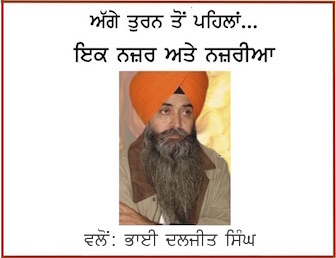Articles/Opinion
With New Norms of IAS Promotions, Modi Govt. Silently Cuts Down Two Levels in Decision Making Process
August 4, 2022 | By Sikh Siyasat Bureau
Recently a write-up by Sanjeev Chopra appeared in The Print under its ‘State of the State’ series. A briefed version of the writeup is being published below. Full writeup may be read at source linked below – SSN).
Silent and Salient Change:
This is a story that never made it to even the inside or insight pages of any newspaper, leave alone an editorial comment. Even the magazines that claim to have an exclusive focus on governance, but essentially carry news about anticipated transfers and postings, did not cover the silent, salient decision taken a few weeks ago by the Narendra Modi government to reduce the effective levels of decision-making in the ministries and departments from five to three.
Three Different Levels But Same Functions:
Until recently, a typical file in a department would move from the undersecretary to the deputy secretary or the director. Under the new dispensation, the distinction between the undersecretary and deputy secretary has also been removed. Thus, even though the undersecretary will be promoted to a deputy secretary and then to a director, the function will remain the same and the frills and pay scales will improve at each level.
Earlier, How was it going?
Here, it should be pointed out that functionally, there was no difference between a deputy secretary and a director. After a certain number of years, the deputy secretary was promoted ‘in situ’ as the director.
In the case of the Indian Administrative Service (IAS), an officer reaches the director’s position in the usual course — in the 12th year of service.
A batch usually gets empanelled as a Joint Secretary (JS) in the 16th year.
What’s Changed?
As per the revised norms, on completion of three decades of service, a JS will be designated as an AS in situ, provided, of course, they are empanelled as AS or AS equivalent. However, both the JS and the AS will submit the files directly to the Secretary, and so, the Additional Secretary is now akin to a non-functional scale!
Why These Changes?
The tenure of the AS is not very long, and the current government is trying to empanel officers to the rank of Secretary soon thereafter to ensure that they get a longer tenure in that position.
How Files Move at Department Levels:
Although in smaller departments, files moved straight from the JS to the Secretary, in large departments like education, health, agriculture, commerce, and finance, the JS would normally submit the files to the Additional Secretary (AS). For decision levels in which the JS was the final authority, an endorsement at the level of AS was the norm, but in most cases, the file would go up to the Secretary.
How will files be processed at Secretariat Level Now?
The undersecretary or deputy secretary or director will initiate the note with basic information about the scheme/programme/issue in question. It will list the budgetary provisions, past precedents, references to related decisions as well as parliamentary assurances, if any, on the subject and recommend a course of action. At the level of the JS and AS inputs from other divisions within the ministry, autonomous bodies, SPVs (Special Purpose Vehicles), PSUs (Public Sector Undertakings) and/or industry chambers will be factored. In case the issue concerns more than one state, inputs from the state government are also taken on board. The file will now be put up to the Secretary who will take a 360-degree view and also look at the implications for the related ministries. Thus, any view on the procurement of cereal by the Food Corporation of India (FCI) or pulses by NAFED (National Agricultural Cooperative Marketing Federation of India) would certainly involve the ministries of agriculture, food, consumer affairs, and commerce.
Does the reduction of two layers of decision-making in the government make a difference? It certainly does, for under the revised norms, each of the three levels will have a specific mandate. While this is a positive step in reducing hierarchy and making the government more functional, there is a new irritant called ‘equivalent’, which has been institutionalised over the last few years.
***
- Source url (to read full writeup) – https://theprint.in/opinion/modi-govt-takes-ias-promotions-to-next-level-additional-joint-secretary-now-come-closer/1063990/
To Get Sikh Siyasat News Alerts via WhatsApp:
(1) Save Our WhatsApp Number 0091-855-606-7689 to your phone contacts; and
(2) Send us Your Name via WhatsApp. Click Here to Send WhatsApp Message Now.
Sikh Siyasat is on Telegram Now. Subscribe to our Telegram Channel
Related Topics: Indian Politics




